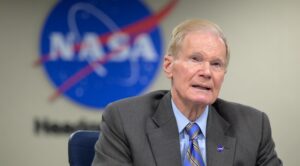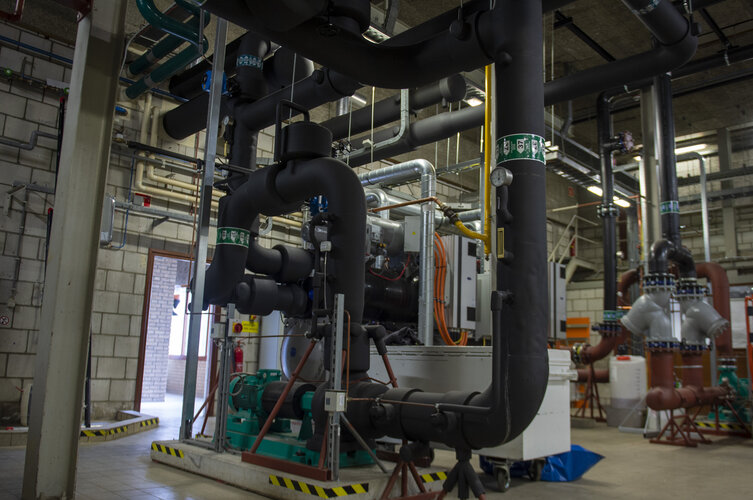Benchmark to keep popular orbits safer with collision avoidance kit
Wednesday, 10 August 2022 10:36 With the most popular, revenue-generating orbits increasingly congested, Benchmark Space Systems has unveiled a breakthrough Collision Avoidance (ColA) Kit, featuring its heritage propulsion technology in a condensed package, that is easily and affordably deployed aboard electric propulsion (EP) and non-propulsive microsatellites and OTVs to help them quickly steer clear of approaching spacecraf
With the most popular, revenue-generating orbits increasingly congested, Benchmark Space Systems has unveiled a breakthrough Collision Avoidance (ColA) Kit, featuring its heritage propulsion technology in a condensed package, that is easily and affordably deployed aboard electric propulsion (EP) and non-propulsive microsatellites and OTVs to help them quickly steer clear of approaching spacecraf AST SpaceMobile's BlueWalker 3 test satellite arrives at Cape Canaveral
Wednesday, 10 August 2022 10:36 AST SpaceMobile, Inc. ("AST SpaceMobile") (NASDAQ: ASTS), the company building the first and only space-based cellular broadband network accessible directly by standard mobile phones, has announced that its BlueWalker 3 test satellite (BW3) has arrived at Cape Canaveral. The satellite recently departed an off-site testing facility in California after collecting flight data for the upcoming plann
AST SpaceMobile, Inc. ("AST SpaceMobile") (NASDAQ: ASTS), the company building the first and only space-based cellular broadband network accessible directly by standard mobile phones, has announced that its BlueWalker 3 test satellite (BW3) has arrived at Cape Canaveral. The satellite recently departed an off-site testing facility in California after collecting flight data for the upcoming plann CST signs agreement with Gilmour Space for the launch of 50kg to LEO
Wednesday, 10 August 2022 10:36 Commercial Space Technologies Ltd (CST) has signed an agreement with Australian launch provider, Gilmour Space Technologies, to offer a launch capacity of up to 50 kilograms on their Eris Block 1 vehicle.
The combination of Gilmour Space's orbital launch services and full CST oversight will offer an affordable launch solution to satellite customers needing access to custom low earth orbits
Commercial Space Technologies Ltd (CST) has signed an agreement with Australian launch provider, Gilmour Space Technologies, to offer a launch capacity of up to 50 kilograms on their Eris Block 1 vehicle.
The combination of Gilmour Space's orbital launch services and full CST oversight will offer an affordable launch solution to satellite customers needing access to custom low earth orbits Spaceflight and SAB partner to fly Sherpa OTVs on Vega missions
Wednesday, 10 August 2022 10:36 Spaceflight Inc., the leading global launch services provider, has announced it signed an agreement with SAB Launch Services S.r.l. (SAB LS) to fly its Sherpa orbital transfer vehicles (OTVs) on Arianespace Vega missions. The agreement extends Spaceflight launch capacity on European missions managed by Arianespace for Spaceflight's OTV-based services on launches starting as soon as next year. Th
Spaceflight Inc., the leading global launch services provider, has announced it signed an agreement with SAB Launch Services S.r.l. (SAB LS) to fly its Sherpa orbital transfer vehicles (OTVs) on Arianespace Vega missions. The agreement extends Spaceflight launch capacity on European missions managed by Arianespace for Spaceflight's OTV-based services on launches starting as soon as next year. Th NASA data on plant 'sweating' could help predict wildfire severity
Wednesday, 10 August 2022 10:36 A new study uses data from the ECOSTRESS instrument aboard the space station to better understand why some parts of a wildfire burn more intensely than others. Even in drought-stricken California, not all areas face the same degree of wildfire risk.
A recent study featuring data from NASA's ECOSTRESS mission found relationships between the intensity of a wildfire and the water stress in pl
A new study uses data from the ECOSTRESS instrument aboard the space station to better understand why some parts of a wildfire burn more intensely than others. Even in drought-stricken California, not all areas face the same degree of wildfire risk.
A recent study featuring data from NASA's ECOSTRESS mission found relationships between the intensity of a wildfire and the water stress in pl China launches terrestrial ecosystem carbon monitoring satellite
Wednesday, 10 August 2022 10:36 China successfully launched a terrestrial ecosystem carbon monitoring satellite and two other satellites from the Taiyuan Satellite Launch Center in north China's Shanxi Province Thursday.
The satellites were launched at 11:08 a.m. (Beijing Time) by a Long March-4B carrier rocket and entered the planned orbit successfully.
The carbon monitoring satellite is mainly used for terrestria
China successfully launched a terrestrial ecosystem carbon monitoring satellite and two other satellites from the Taiyuan Satellite Launch Center in north China's Shanxi Province Thursday.
The satellites were launched at 11:08 a.m. (Beijing Time) by a Long March-4B carrier rocket and entered the planned orbit successfully.
The carbon monitoring satellite is mainly used for terrestria Lockheed Martin's next gen interceptor achieves communications testing milestone
Wednesday, 10 August 2022 10:36 Lockheed Martin recently validated prototype communications radio technology for the Next Generation Interceptor (NGI) during a recent test milestone.
The NGI's mission is to protect the U.S. homeland from increasing and evolving intercontinental ballistic missile threats. Critically, the interceptor and its components must be able to receive and share data from the ground and throughout t
Lockheed Martin recently validated prototype communications radio technology for the Next Generation Interceptor (NGI) during a recent test milestone.
The NGI's mission is to protect the U.S. homeland from increasing and evolving intercontinental ballistic missile threats. Critically, the interceptor and its components must be able to receive and share data from the ground and throughout t Space Accelerator catalyses multi-million pound investment
Wednesday, 10 August 2022 10:36 Space start-ups generated almost 9 million pounds in investment and created 80 new jobs after taking part in a UK Space Agency-backed business support programme.
The UK Space Agency Space Accelerator Programme, delivered by Entrepreneurial Spark, worked with entrepreneurs from all over the UK aged between 18-70, with business expertise in sectors such as aerospace, law, quantum technology,
Space start-ups generated almost 9 million pounds in investment and created 80 new jobs after taking part in a UK Space Agency-backed business support programme.
The UK Space Agency Space Accelerator Programme, delivered by Entrepreneurial Spark, worked with entrepreneurs from all over the UK aged between 18-70, with business expertise in sectors such as aerospace, law, quantum technology, New analysis shows how sulfur clouds can form in Venus' atmosphere
Wednesday, 10 August 2022 10:36 Scientists using sophisticated computational chemistry techniques have identified a new pathway for how sulfur particles can form in the atmosphere of Venus. These results may help to understand the long sought-after identity of the mysterious ultraviolet absorber on Venus.
"We know that the atmosphere of Venus has abundant SO2 and sulfuric acid particles. We expect that ultraviolet destru
Scientists using sophisticated computational chemistry techniques have identified a new pathway for how sulfur particles can form in the atmosphere of Venus. These results may help to understand the long sought-after identity of the mysterious ultraviolet absorber on Venus.
"We know that the atmosphere of Venus has abundant SO2 and sulfuric acid particles. We expect that ultraviolet destru Nelson satisfied with NASA authorization act
Wednesday, 10 August 2022 10:24
NASA Administrator Bill Nelson says the agency has “gotten what we need” from an authorization bill that became law Aug. 9.
The post Nelson satisfied with NASA authorization act appeared first on SpaceNews.
Maxar’s satellite business looks to gain foothold in defense market
Wednesday, 10 August 2022 08:36
To offset a downturn in commercial satellite sales, Maxar is positioning itself to compete in the national security arena, Chris Johnson, head of Maxar’s satellite manufacturing operations, tells SpaceNews in an exclusive interview.
The post Maxar’s satellite business looks to gain foothold in defense market appeared first on SpaceNews.
Keeping space centre’s cool
Wednesday, 10 August 2022 06:26 Image:
Keeping space centre’s cool
Image:
Keeping space centre’s cool Blue Canyon Technologies to build Tomorrow.io constellation
Wednesday, 10 August 2022 03:11
Blue Canyon Technologies won its largest constellation order to date, a contract with weather technology company Tomorrow.io.
The post Blue Canyon Technologies to build Tomorrow.io constellation appeared first on SpaceNews.
Blue Canyon Technologies to build Tomorrow.io microwave satellites
Wednesday, 10 August 2022 03:11
Blue Canyon Technologies won its largest constellation order to date, a contract with weather technology company Tomorrow.io.
The post Blue Canyon Technologies to build Tomorrow.io microwave satellites appeared first on SpaceNews.
NovaWurks reveals contracts, expansion plans and Space Legos
Wednesday, 10 August 2022 02:49
After a series of spaceflight demonstrations followed by years of secrecy, Novawurks is ready to talk contracts, customers and expansion plans.
The post NovaWurks reveals contracts, expansion plans and Space Legos appeared first on SpaceNews.
